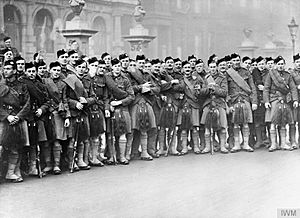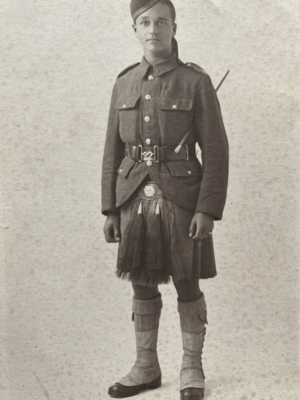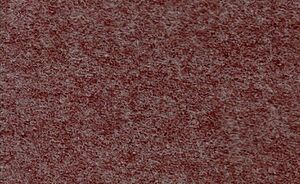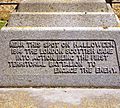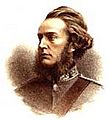London Scottish (regiment) facts for kids
Quick facts for kids A (The London Scottish) Company |
|
|---|---|

Cap Badge of the London Scottish
|
|
| Active | 1859–1919 1920–2022 |
| Country | |
| Branch | |
| Type | Infantry |
| Role | Light infantry |
| Size | One company |
| Part of | London Regiment |
| Garrison/HQ | 59 Buckingham Gate (1886–1985) Horseferry Road drill hall (1985–2017) 76D Rochester Row (2017–present) |
| Nickname(s) | Cockney Jocks (Piccadilly Allsorts) (Duke of Bangkok's Rifles) |
| Motto(s) | Strike Sure |
| March | Highland Laddie |
| Anniversaries | 31 October 1914. First TA unit into action in WWI, Messines Ridge, 1st Battle of Ypres |
| Commanders | |
| Honorary Regimental Colonel | Lord Geidt GCB GCVO OBE QSO PC |
| Colonel of the Regiment |
Air Vice-Marshal Ranald Torquil Ian Munro CBE TD VR |
| Insignia | |
| Tartan | Hodden Grey |
The London Scottish was a special group of soldiers in the British Army. They were part of the Army Reserve, which means they were trained soldiers who could be called upon when needed.
For a long time, they were an infantry regiment, which is a large group of soldiers. Later, they became a smaller group called a company. Their full name was A (The London Scottish) Company, part of the London Regiment.
In May 2022, the soldiers from this company joined other famous groups called Foot Guards regiments. The company then became G (Messines) Company, part of the Scots Guards and the 1st Battalion London Guards.
Contents
History of the London Scottish
How the Regiment Started
The London Scottish regiment began in 1859. This was when the Volunteer Force was created. This force was made up of ordinary people who volunteered to train as soldiers in their spare time.
A group of Scottish people living in London decided to form their own volunteer group. They called themselves The London Scottish Rifle Volunteers. Over the years, their name changed a few times. By 1908, they were known as the 14th (County of London) Battalion, London Regiment (London Scottish).
The London Scottish in World War I
When World War I started in 1914, the 1st Battalion of the London Scottish was quickly sent to France. On October 31, 1914, they met German forces in a battle at Messines in Belgium.
This was a very important moment because they were the first "territorial unit" (a type of volunteer soldier group) to fight in the war. There is a memorial at Messines today to remember their bravery. Another part of the regiment, the 2nd Battalion, also went to France later and served in places like Salonika and Palestine.
Between the World Wars
In 1937, the London Regiment was reorganized. The London Scottish unit was then renamed The London Scottish, The Gordon Highlanders. This showed their connection to another famous Scottish regiment.
The London Scottish in World War II
During World War II, the London Scottish formed three different groups, called battalions. Two of these battalions fought overseas in places like Sicily and Italy.
1st Battalion's Role
The 1st Battalion was the main group of the regiment. They fought as infantry soldiers, meaning they fought on foot. They were part of the 56th (London) Infantry Division, which was nicknamed "The Black Cats."
This battalion played a big part in the Italian Campaign. They fought in many tough battles, including the Allied invasion of Sicily, at Monte Cassino, and during the Battle of Anzio. They also took part in the final big attack in Italy in 1945, called Operation Grapeshot.
2nd Battalion's Role
The 2nd Battalion was created as a "copy" of the 1st Battalion. It had experienced officers and leaders from the 1st Battalion to help it get started.
3rd Battalion's Role
The 3rd Battalion was a bit different. It was formed as an anti-aircraft (AA) regiment. This meant their job was to shoot down enemy planes. They were called the 97th (The London Scottish) Heavy Anti-Aircraft Regiment, RA.
They helped defend London during the Battle of Britain and the Blitz, which were times when German planes bombed the city. Later, they went to North Africa and then to Italy, fighting alongside the British Eighth Army. As the war went on and there were fewer enemy planes, they changed their role to become an infantry regiment.
After the Wars
After World War II, the London Scottish tradition continued. In 1967, a new group called G (London Scottish) Company was formed. From 1992, this tradition was carried on by A (London Scottish) Company of the London Regiment (1993). This company helped provide reserve soldiers for the Foot Guards, who are special regiments that protect the King or Queen.
London Scottish Cadet Corps
The London Scottish Cadet Corps started around 1902. It was a group for young people who wanted to learn about military life. They had their own pipe band and flags.
Today, this cadet corps is known as 235 Westminster Detachment (London Scottish Regiment). It's part of the Middlesex and North West London Army Cadet Force. This group, along with two others, keeps the traditions of the London Scottish regiment alive for young people today. They are based in Westminster.
Unique Uniforms
Since 1859, the London Scottish has worn special uniforms that are a unique color called Hodden Grey. This color is a mix of grey and brown. They also had dark blue parts on their uniforms.
This unique color was used for their formal uniforms until 1914. Even today, you can see this special Hodden Grey color in their kilts and formal "mess dress" uniforms.
Regimental Pipes and Drums
The Regimental Pipes and Drums of The London Scottish is one of the oldest army pipe bands in the world! It was started soon after the regiment itself.
This band wears its own special Hodden Grey tartan, which is a patterned fabric often worn by Scottish people. They play music for the regiment during important events like official dinners, military parades, and special ceremonies where new flags are presented.
The band has performed at many big events in London, such as the Beating Retreat and the Lord Mayor's Show. They have also traveled to many countries, including Germany, Italy, and Jamaica, to perform in parades and military tattoos (military music shows).
From 1953 to 2002, the leader of the London Scottish Pipe Band was also the personal Piper to the Queen Mother.
Alliances with Other Regiments
The London Scottish has a special connection, called an alliance, with another regiment:
Victoria Cross Heroes
The Victoria Cross is the highest award for bravery in the British military. Three members of the London Scottish regiment were given this amazing award for their courage:
- Charles William Train; in Palestine, 1917.
- Robert Edward Cruickshank; in Palestine, 1918.
- George Allan Mitchell; in Italy, 1944.
Memorials
The London Scottish has memorials to remember their soldiers who fought in World War I and World War II. These memorials are located at the Drill Hall in London Scottish House, on Horseferry Road in Westminster.
Images for kids




